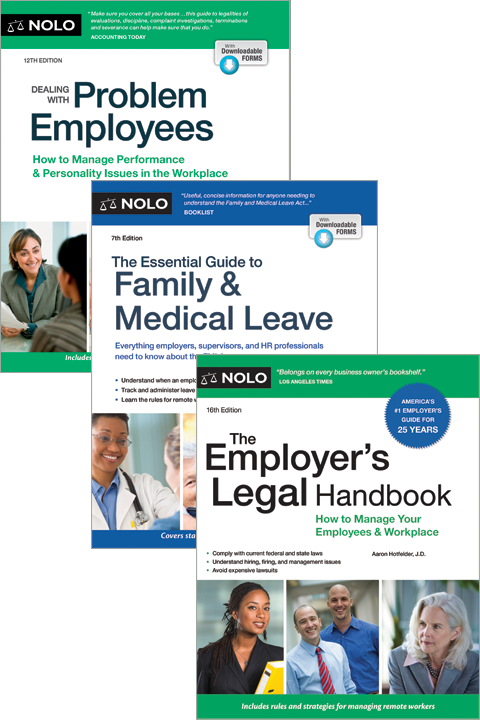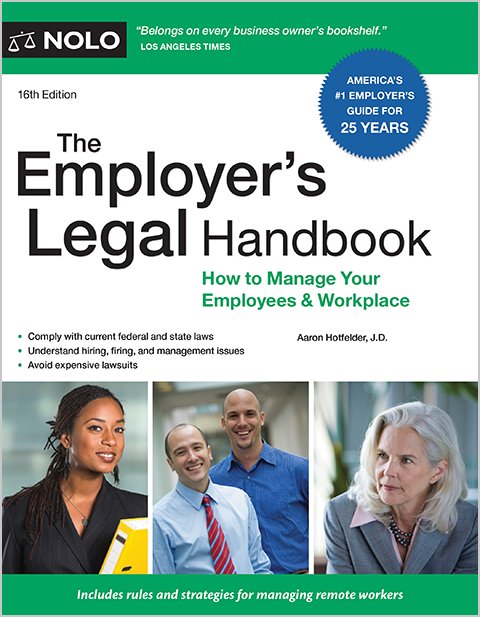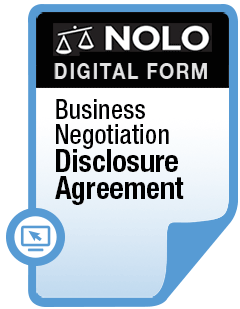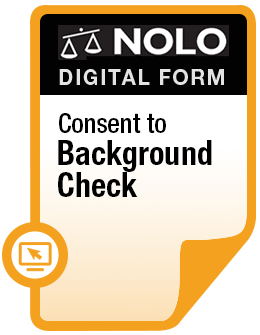Learn whether new parents in California can take time off after the arrival of a new child.
Having a child is one of the biggest events to happen in an employee's life. Both employees and their children can benefit from time together to bond, especially in the first few months of life.
However, for many employees, taking an extended period of time off is unrealistic if they have to worry about finances and the possibility of losing their jobs. Recognizing this, California has led the charge to ease this burden for new parents by passing some of the most protective leave laws in the nation.
What Is Parental Leave?
Parental leave, also called "bonding leave," is the time off that parents take to bond with their new child. For women in California, maternity leave is a combination of parental leave and pregnancy disability leave (see below for an explanation). For men in California, paternity leave is the equivalent of parental leave.
Which Employers Must Provide Parental Leave?
The federal Family Medical Leave Act (FMLA), and the similar California Family Rights Act (CFRA), require employers with 50 or more employees to provide up to 12 weeks of unpaid leave to bond with a new child. The New Parents Leave Act (NPLA) provides for the same amount of leave for new parents who work for employers with 20 to 49 employees.
Family leave is available for other reasons as well, including to care for an ill family member. To learn more, see our article on Family and Medical Leave in California.
Who Is Eligible for Parental Leave?
To qualify for FMLA/CFRA leave, an employee must:
- have worked for a covered employer for at least 12 months
- have worked at least 1,250 hours in the 12 months immediately preceding the leave, and
- work at a location where the employer has at least 50 employees in a 75-mile radius.
The eligibility requirements are the same under the NPLA, except the last one requires the employee to work at a location where the employer has 20 or more employees in a 75-mile radius.
How Much Time Off Do I Get for Parental Leave?
Eligible employees may take 12 weeks of parental leave within the first year of a child's arrival by birth, adoption, or foster placement. New mothers and fathers are entitled to the same amount of parental leave. In fact, it would be illegal gender discrimination for an employer to provide different amounts of bonding leave to employees based on sex.
However, because female employees are the only ones who can become pregnant and give birth, they can receive additional time off for pregnancy disability. This is time off due to the physical or mental effects caused by pregnancy or childbirth. In California, pregnant employees are typically entitled to an additional ten to 12 weeks off for pregnancy disability. See our article on California pregnancy disability leave to learn more.
Do I Get Paid During Parental Leave?
Employers are not required to provide paid parental leave under federal or California law. (San Francisco employers of a certain size are required to provide paid leave under a city ordinance though.) You can request, or your employer can require, that your accrued paid vacation, sick leave, or PTO be paid out during your leave. Your employer must continue your group health coverage during your leave.
California is one of a handful of states with a paid family leave program. New parents can receive partial wages from the state while taking time off to bond with a child. The state pays 60 percent of most employees' wages–up to a maximum set by state law ($1,300 in 2020)—for six weeks. Low-income earners who make one-third of the state average wage receive 70% of their wages. (For more information, including eligibility requirements, see our article on California paid family leave.)
Even if you aren't legally entitled to time off—because you work for an employer with fewer than 20 employees for example—you can still receive paid family leave benefits. You just won't be entitled to job-protected leave.
Do I Have the Right to Reinstatement?
At the end of your leave, your employer must reinstate you to the same job or a comparable one. A comparable job is one that is the same or similar in terms of pay, duties, and location. For example, if you're a cashier at a grocery store, your boss can't make you work as a bagger at a location 50 miles away.
How Do I Request Parental Leave?
Under the FMLA/CFRA, employers can require employees to give at least 30 days' notice when the need for leave is foreseeable, which includes an expected birth, adoption, or foster placement. If the leave for need is not foreseeable, the employee must give as much notice as practicable. For example, if you're brought in for an emergency C-section weeks before your due date, you should give notice as soon as you get the chance.



